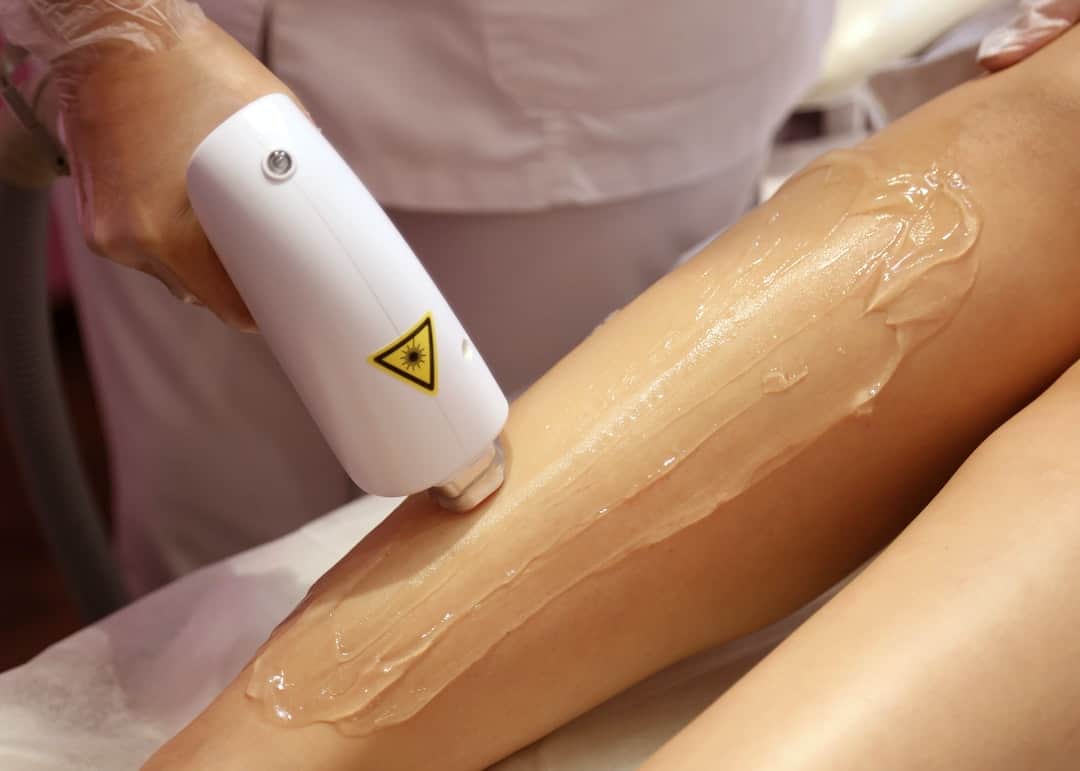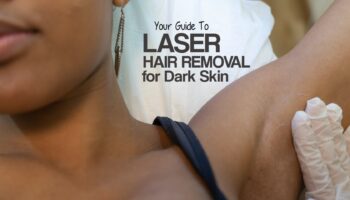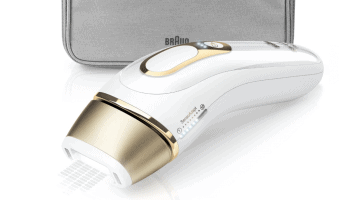If you’re looking for a longer-lasting solution to unwanted body hair, laser hair removal may be the answer. It is often touted as one of the more permanent hair removal methods available, but is it really permanent?
In this article, we’ll look at what exactly laser hair removal entails, how it works, and explore whether or not it is actually permanent. Make your own decision about your beauty regimen. Find out once and for all if laser therapy is truly the lasting solution to removing those pesky hairs forever!
Table of Contents:
- What is Laser Hair Removal
- How Does it Work?
- Is Laser Hair Removal Permanent?
- How Long Does it Last?
- Are There Any Side Effects?
- FAQs in Relation to Is Laser Hair Removal Permanent
- Conclusion
What is Laser Hair Removal?
Laser hair removal is a medical procedure to remove unwanted body hair using laser technology. Laser beams target and destroy hair follicles.
It works by targeting the melanin (pigment) within each individual hair follicle, which then absorbs the laser energy. This energy destroys or damages the root of the hair follicles with the aim of preventing the production of new hairs.
The process can be used on almost any area of skin with unwanted body hair including legs, arms, underarms, bikini area, and face.
It is usually performed by a dermatologist or trained aesthetician. Both men and women are suitable candidates and all types of skin tones can be treated safely and effectively. It tends to work best for those with darker hair and lighter skin color, however. The chest and back are both popular areas for laser therapy sessions with men.
Is laser hair removal permanent? This is the million-dollar question many people ask and contrary to popular belief, the answer is no, not exactly. Laser removal treatments will permanently reduce the overall amount of body or facial hair over time. So a better term to use is permanent hair reduction. And then, as long as you follow up with regular maintenance sessions.
Some people may experience hair regrowth after their initial session due to hormonal changes or other factors such as genetics. It’s important to keep up with repeat treatments in order to maintain optimal results.
How Many Sessions Will I Need?
How long does it last? It really depends on the individual and the treatment area as to the number of sessions required to get the best results. Most people typically require between 4-6 treatments spaced 4-8 weeks apart before seeing lasting effects from their laser treatments. After this initial course of treatments, you should expect up to 12 months’ worth of smoothness before requiring a touch-up session.
While there are no serious side effects relating to laser hair removal, there may be some minor discomfort during treatment. Redness or swelling at the treated site is possible which usually subsides within 24 hours post-treatment. Symptoms will vary from person to person based on individual sensitivity levels etc.
Additionally, hyperpigmentation (darkening) in certain areas following treatment is possible which again should resolve itself without any intervention. If concerned, please consult your healthcare professional immediately for advice or any treatment options available.
Laser hair removal is a safe and effective way to reduce or remove unwanted body hair. It is an increasingly popular choice for those looking for long-term results. Now you know what it is, let’s take a look at how it works.
How Does it Work?
Laser hair removal works when laser pulses beams of light that pass through the skin and target the melanin in hair follicles. Melanin, or pigment, absorbs light from the laser beams. This light energy then converts to heat, and the heat damages the hair follicle helping to prevent future hair growth.
The process begins with a consultation where your doctor or healthcare provider will evaluate your skin type, medical history, and desired results. During this time, they’ll also discuss any potential risks or side effects associated with laser treatments. Although considered a safe method of removing body hair, there are some potential side effects to be aware of.
Once you’ve made the decision to move forward, you’ll be asked to shave or trim any areas for treatment prior to your appointment. It’s important there is no interference between the laser light and your skin during treatment.
What Happens During Treatment?
During each session, an aesthetician will hold a handheld device containing lasers over each area for several minutes. This allows for laser beams to work on all hairs. When one area is complete, another can begin right away.
Most people experience some degree of discomfort during their sessions due to feeling warmth or tingling sensations. Exposure to high levels of energy are responsible but these feelings usually subside quickly after treatment ends. Some may even find relief in applying an ice pack directly on the skin post-treatment.
Results are noticeable after just one session but repeat treatments are typically necessary for maximum effectiveness. Not all hairs grow at the same rate and hair needs to be in the growth phase for laser to work.
Related: Does Hair Grow Back After Laser Hair Removal?
Is Laser Hair Removal Permanent?
This form of hair removal is often thought of as a permanent way to get rid of body hair. But in reality, it does not guarantee the complete elimination of all hair in an area forever.
You could however be one of the lucky ones and hair just might not grow back, a body hair hater’s dream!
Moreover, it would be safer to say laser can permanently reduce body hair with a high success rate for permanent hair reduction. Some hairs may still grow back after treatment, but they will be finer and lighter than before. This means that you’ll have less visible body hair overall, even if some individual strands remain or regrow over time.
How Long To See Results
The number of treatments needed for long-term results varies depending on factors such as skin type and color, as well as the thickness and coarseness of your existing body hair.
In general, most people require between four to six sessions spaced several weeks apart to achieve the best results. After each session, there should be a noticeable decrease in the amount of hair present on treated areas. But it’s important to note that some individuals may need additional sessions beyond those recommended for best results.
It’s also important to keep up with maintenance laser treatments once you reach your desired level of smoothness. These maintenance sessions are typically scheduled every few months or so depending on an individual’s rate of hair regrowth. Maintenance visits help ensure that any newly grown hairs don’t become too thick or coarse before they can be removed again with another round of laser treatments.
How Long Does it Last?
With regard to how long laser hair removal lasts, the answer can vary from person to person and depends on several factors. Skin type, hair color, hair thickness, the area for treatment as well as whether you’re completely new to laser or not all have an impact on how long hair takes to grow back.
Skin Tone: People with lighter skin tones and dark hair tend to respond better to laser than those with darker complexions because the laser targets melanin in the follicles. Detection of the contrast is easier in those with lighter skin tones.
Additionally, people who have recently tanned may not be good candidates for treatment as their increased melanin levels make them more susceptible to burns or other side effects.
Hormones: Hormone levels impact the rate of hair growth and can affect treatment results also. More sessions may be necessary for those with high hormone levels as hair will tend to grow faster. Hormonal changes such as menopause can also affect how well laser works as there may be less melanin in the hair follicles to target.
Different Types of Laser
Type of Laser Used: Laser is not a one type fits all and different lasers perform better on different skin tones and hair types.
Ruby laser is good for treating small areas and works best on light-colored, finer hair.
Diode lasers suit darker skin tones and penetrate deep into the hair follicle. They suit larger treatment areas as well as thick or coarse hair. This type of laser is sometimes used in home laser devices.
Alexandrite lasers suit light to olive skin and work fast but may be more uncomfortable.
Nd:yag laser systems have a wide range and are not only suitable for hair removal but also for tattoo removal and other applications. The technology is more advanced and is safe for all skin types.
IPL – Intense Pulsed Light – Not a true laser but carries out the same function targeting the melanin in hair by way of intense pulsed light energy. This is most popular in home laser hair removal devices. IPL devices can be customized to suit and are more suited to those with fairer skin and darker complexions.
Genetics: Genetics plays a large role when it comes to determining how long laser hair removal lasts since some individuals are predisposed towards thicker, coarser hairs that take longer to grow back after treatment. Even though you may experience initial success after just one session, you may still need additional treatments down the line if your genes predispose you towards thicker growth patterns.
New to Laser: If you’re completely new to laser, bear in mind that hair must be in the growing or anagen phase for successful treatment. All hairs grow at different rates so it depends at which stage hair is at as to how long it takes to grow back.
In general, most people experience long-term hair reduction after several laser hair removal treatments. Some people may see permanent hair loss while for others, it is temporary. To maintain results, periodic touch-up treatments are usually necessary but it’s an individual thing as to the intervals.
Are There Any Side Effects?
Laser hair removal is generally thought of as safe when a trained and qualified provider carries out the treatment. However, as with any medical procedure, there are some potential side effects to be aware of.
The most common side effect associated with laser hair removal is redness and swelling in the treated area. This typically resolves within a few hours or days after treatment, but you may experience mild itching or tenderness as well.
In rare cases, you may also notice temporary discoloration of your skin around the treated area. This usually fades over time without any additional treatments being necessary but may be permanent.
In addition to these more common side effects, there are other risks that should be taken into consideration before undergoing treatment. These include scarring or burning of the skin if too much energy is applied during treatment, changes in pigmentation (darkening or lightening) due to heat damage, infection from improper sterilization techniques and eye injury if protective eyewear isn’t worn during treatment sessions.
It is important to discuss all possible risks with your provider prior to beginning treatment. You’ll need to make an informed decision about whether this procedure is right for you and your lifestyle needs. Your doctor will also provide specific instructions on how best to care for your skin following each session. This is important to minimize any potential side effects or complications from occurring.
FAQs in Relation to Is Laser Hair Removal Permanent
How long does laser hair removal really last?
The results vary from person to person but typically last at least 4-6 months, up to 12 months. After this period, the treated area may require additional touch-up treatments to maintain smooth, hair-free skin. Some people find the results can even last years with proper maintenance. Laser is an excellent choice for those looking for long-term reduction of body hair without having to worry about frequent shaving or plucking sessions.
What percentage of laser hair removal is permanent?
Each laser treatment destroys a certain percentage of follicles but its difficult to say what. Consistent laser treatments are key to increasing the chance for more permanent results. Over time, hair regrowth greatly decreases and hair that does grow back tends to be finer. Of course, results vary depending on the individual, but most people can expect long-term results with minimal maintenance required.
What are the negatives of laser hair removal?
Laser, while effective, comes with some potential drawbacks. One of the most common side effects is skin irritation and redness that may last for several hours or days after treatment. Other possible risks include hyperpigmentation (darkening) or hypopigmentation (lightening) of the treated area. Temporary swelling around the eyes is possible if treating facial hair. In rare cases, laser treatments can cause scarring or burns on the skin. It is important to talk to a healthcare professional to understand potential risks.
Is it worth getting laser hair removal?
Laser is a great option for those looking to reduce the amount of time spent on regular hair removal methods such as shaving, waxing or epilating. It can provide smooth skin with minimal maintenance.
It might appear to be a more costly method of hair removal and initial treatments are expensive. But actually, if you take time and convenience into consideration as well as the cost of hair removal tools and other products you might otherwise need, you could find that overall, it is quite comparable. Ultimately, laser hair removal is worth considering if you’re looking for a more permanent solution to unwanted body hair.
Does hair grow back years after laser?
It could surprise you to learn that yes, hair can grow back long after laser treatments.
Although laser beams destroy a percentage of hair follicles during treatment, they typically only damage them. The result is temporarily disablement from growing new hairs. They can eventually heal and start to regrow hairs months or even years after treatment.
Some people may need touch-up treatments every so often to maintain their results. In addition, some people may experience new hair growth due to hormonal changes, medication use, or other factors.
It is important to note that laser hair removal is not the same as electrolysis. This is the only method of hair removal that has the approval of the U.S. Food and Drug Administration (FDA) as being permanent.
Conclusion
In conclusion, laser hair removal is considered a safe and effective method of treating and getting rid of unwanted body hair. While it’s not permanent, since it doesn’t usually destroy follicles, it can provide long-term results that can last up to several years depending on your skin type and other factors. There are also few side effects when performed properly by a professional.
For an effective hair removal solution, consider giving laser hair removal a try. You might be one of the lucky ones who finds the answer to “Is Laser Hair Removal Permanent?” and achieve permanent results.
At Just Talk Beauty, we provide reliable information on the best methods and techniques that will help you achieve smooth, touchable skin without worrying about stubble or ingrown hairs. Learn more today and take control of your beauty routine with our comprehensive resources!
Resources –
https://www.ncbi.nlm.nih.gov/books/NBK507861/ – lasers used in hair removal,
https://www.tandfonline.com/doi/full/10.1080/14764172.2022.2075899 – Efficacy of lasers and light sources in long-term hair reduction: a systematic review






